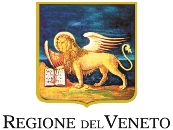The Second Annual Conference of the Italian Society for Climate Sciences will take place on September 29-30, 2014 at Ca’ Foscari University of Venice.
Conference Room
Ca’ Dolfin
Dorsoduro 3825/D, 30123 Venezia
Find on the map (Ca’ Foscari University Website)
The conference will be held in the recently restored Ca’ Dolfin.
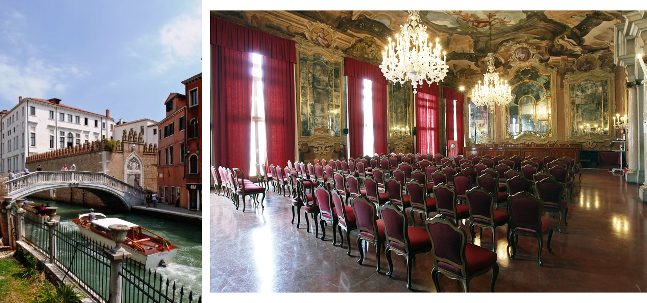 The Aula Magna Silvio Trentin is a large, sixteenth century hall located on the first floor of the Dolfin Palace. The ceilings and walls of this large and impressive space are adorned with frescoes in the style of the School of Tiepolo with medallions illustrating allegorical figures, Murano chandeliers and mirrors. Once the room contained ten paintings portraying historical events by Giambattista Tiepolo, now displayed in the Hermitage Museum in Saint Petersburg. A modern, multimedia infrastructure with coupled with the possibility to set up catering for events in the entrance hall or the internal gardens make this location suitable for hosting prestigious events, in particular conventions and conferences.
The Aula Magna Silvio Trentin is a large, sixteenth century hall located on the first floor of the Dolfin Palace. The ceilings and walls of this large and impressive space are adorned with frescoes in the style of the School of Tiepolo with medallions illustrating allegorical figures, Murano chandeliers and mirrors. Once the room contained ten paintings portraying historical events by Giambattista Tiepolo, now displayed in the Hermitage Museum in Saint Petersburg. A modern, multimedia infrastructure with coupled with the possibility to set up catering for events in the entrance hall or the internal gardens make this location suitable for hosting prestigious events, in particular conventions and conferences.
The other rooms that, in addition to the Aula Magna, will host the Conference’s session (“Room A” and “Room B“), are on the ground floor. Please, follow the signage inside the building to easily reach the rooms.
Ca’ Foscari University of Venice
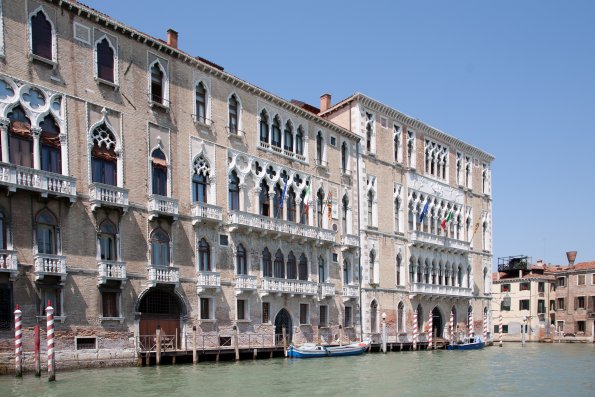
Ca’ Foscari University’s relationship with Venice runs deep, so much so that it took the same name as that of the prestigious palace that sits on the largest bend of the Grand Canal, and which once belonged to the Doge Foscari. This
building has been the University’s main seat since it was established in 1868.
An extraordinary example of late Venetian Gothic architecture, Ca’ Foscari is the one private dwelling that more than any other was the stage for many events which had great political and historical significance for Venice. It held receptions for important people, such as Frederick IV King of Denmark, Henry III King of France and Poland, and Peter the First, Tsar of Russia. Its unequalled vista of the Grand Canal, directly overlooking the point of arrival of the Historical Regatta, has enchanted nobles, poets, artists and writers of all times.
Over the twentieth century the building underwent two important restoration phases at the hands of the Venetian architect Carlo Scarpa. In 1936 he worked on the entrance hall, the first floor hall and the great hall (‘magna aula’), which was previously a product museum. In particular, in the entrance hall the visual connection between the ‘water entrance’ (access from the Grand Canal) and ‘land entrance’ (access from the street and courtyard) was renovated. In 1956 Carlo Scarpa was asked back to transform the great hall into a classroom, creating a corridor by using boiseries.
Scarpa’s innovative project underlines the 15th century structure of the palazzo, creating plays of light, lines and volumes melding tradition and modernity.
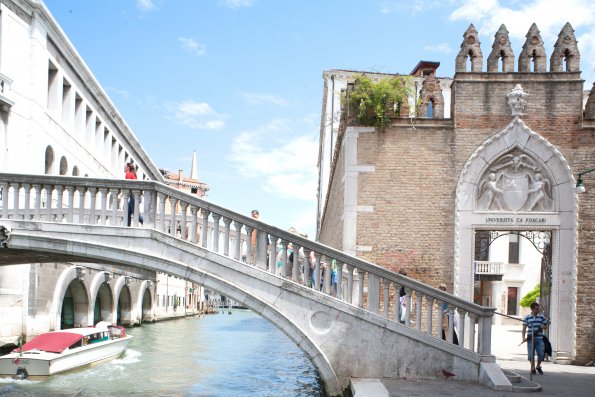
The Aula Magna also contains two murals dating to the 1930s “Venezia, l’Italia e gli studi” (Venice, Italy and Studies) by Mario Sironi and “La scuola” (The School) by Mario De Luigi.
Both paintings clearly reflect the different meanings attributed by each artist to studies and learning. The main entrance doors, ground floor wall and the line of the hand rail running up the main staircase are all in Scarpa’s signature style. Between 2004 and 2006 the Ca’ Foscari complex underwent a painstaking restoration programme. The programme, which was awarded the prestigiousPremio Torta in 2007, represented a major challenge for both architects and designers who were required to blend old and new while respecting the heritage left by Carlo Scarpa.
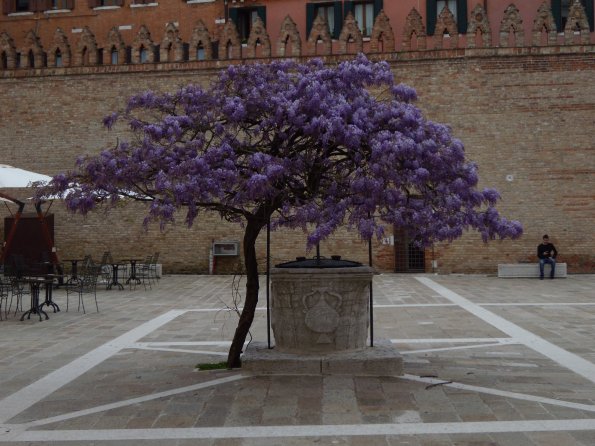
Besides Ca’ Foscari, the University can boast many other locations, each with its own history, style and charm. An architectural heritage that includes noble palaces such as Ca’ Dolfin, or Ca’ Bernardo with their impressive halls, charming courtyards and gardens, as well as buildings that have been recently modernized such as San Giobbe University Campus and the Via Torino area.
These buildings and spaces are used every day by students, professors, lecturers and researchers. In these spaces, all the University activities take place: teaching, learning, studying, as well as conferences, conventions, and special events devoted to innovation, research and cross-cultural exchange. Like the town that hosts it, Ca’ Foscari has always been a crossroads for different cultures, ideas and knowledge.
Thanks to the interrelationship of Venice, the University and History, these buildings, courtyards and gardens are special and unique places that embody the beauty and fascination of the town, of the knowledge they hold and of the
people who come here.
The Aula Mario Baratto and the President’s Reception Room on the main floors (‘piani nobili’) of Foscari-Giustinian complex, the Aula Magna in the nearby Ca’ Dolfin, and the Auditorium Santa Margherita in Campo Santa Margherita are among the most important event spaces.
Among the exhibition areas available, the large and light-filled rooms in Ca’ Giustinian de’ Vescovi, adjacent to Ca’ Foscari, are standouts. Over 800 square meters of open space with rooms, some of which look out onto the Grand Canal, some face two elegant internal courtyards, that once welcomed the noble guests of the Republic of Venice. These spaces are the ideal setting for exhibitions, shows, and events of all kinds.
Ca’ Foscari is the oldest building in the world to have received LEED EB: O&M certification.
The external and internal spaces of Ca’ Foscari palace can be visited thanks to the special Ca’ Foscari Tour, a guided visit service that is available in Italian, English or Italian sign language and is organised by the Information Centre (URP).

















